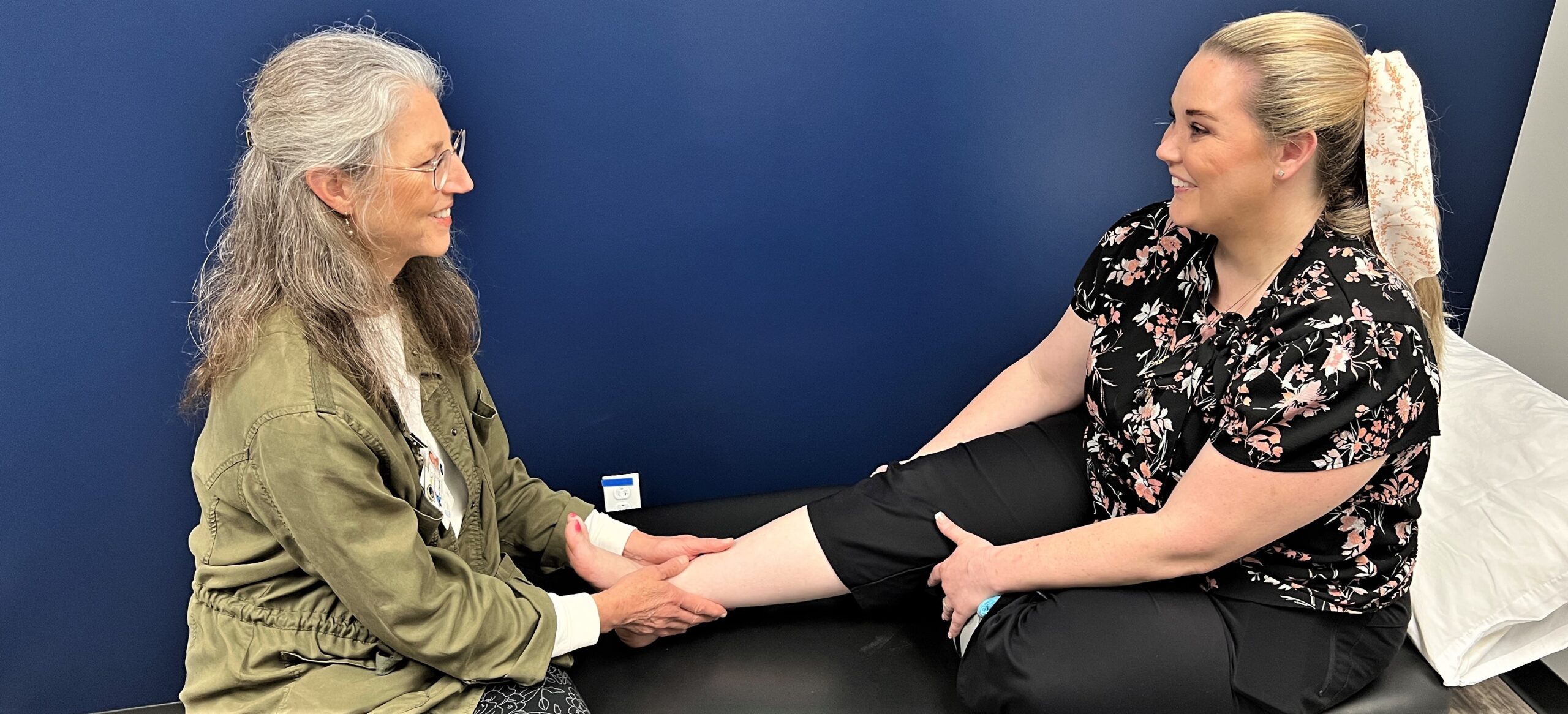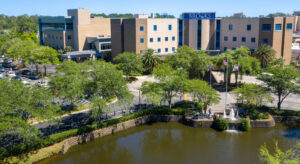Making Improvements with Complex Regional Pain Syndrome

Back to physical health resource hub
In December 2017, Amber Meade broke her right foot. This seemingly simple injury turned out to be life-changing.
The break revealed an extra bone in her foot. She needed surgery to remove the extra bone and move her tendon to the correct bone. Unknowingly, a screw used in the repair was pressing on the nerve in her foot. It was so painful, she couldn’t even stand.
As a surgical assistant, she wasn’t able to work because she couldn’t stand on her feet. She couldn’t participate in physical therapy because of the pain. And when she had to tell her son she couldn’t do something with him, he would say, “I know, because your foot hurts.”
After nine months and no improvements, she went to a different doctor for a second opinion. He did a nerve block, which identified a problem, and Amber was sent to a pain management physician to manage it. The pain management physician performed nerve decompression, a surgical procedure to relieve pressure and pain caused by the pinch nerve, and repositioned the screw in her foot. He was the first to mention Complex Regional Pain Syndrome (CRPS).
CRPS is a rare pain condition that can develop after an injury, a surgery or for an undetermined reason. It is one of over 7,000 rare diseases as established by the National Organization for Rare Disorders (NORD). Because of the rare nature of this disease, people often struggle for up to a year to get an accurate diagnosis. With CRPS, there is a constant pain sensation described as fire, ice, burning and stinging. It is associated with swelling, skin color changes, hot or cold variations and weakness or stiffness. Many then experience chronic and persistent pain that leads to lifestyle changes that they never imagined – their clothing hurts, being hugged is painful and some require the use of a wheelchair.
Amber describes her leg as feeling like it was in a bucket of ice at times and a fire pit at others. A slight breeze blowing on her leg caused pain. The feel of the sheets touching her leg when she got into bed at night was excruciating. “I would cry every day because of the pain I was in,” said Amber.
Her physician recommended she see Anita L. Davis, PT, DPT, FNCP, CNPT, a physical therapist with Brooks Rehabilitation who specializes in CRPS. Through physical therapy, relaxation techniques and sessions with other CRPS patients, Amber is doing much more now.
“My favorite place to go is the beach and I can walk in the sand now. I am so grateful to Anita for getting that back. I also couldn’t walk a block before and now I can take the dog on short walks. I am homeschooling my son and have started to enjoy my love of crafting again as my mind isn’t constantly thinking about the pain. I really can’t express how much Anita has helped me with the little things in life that I needed to be able to do to feel like a person again,” said Amber.
“People with rare diseases struggle on many levels. Being able to treat and advocate for patients like Amber is my primary focus,” said Dr. Davis.


